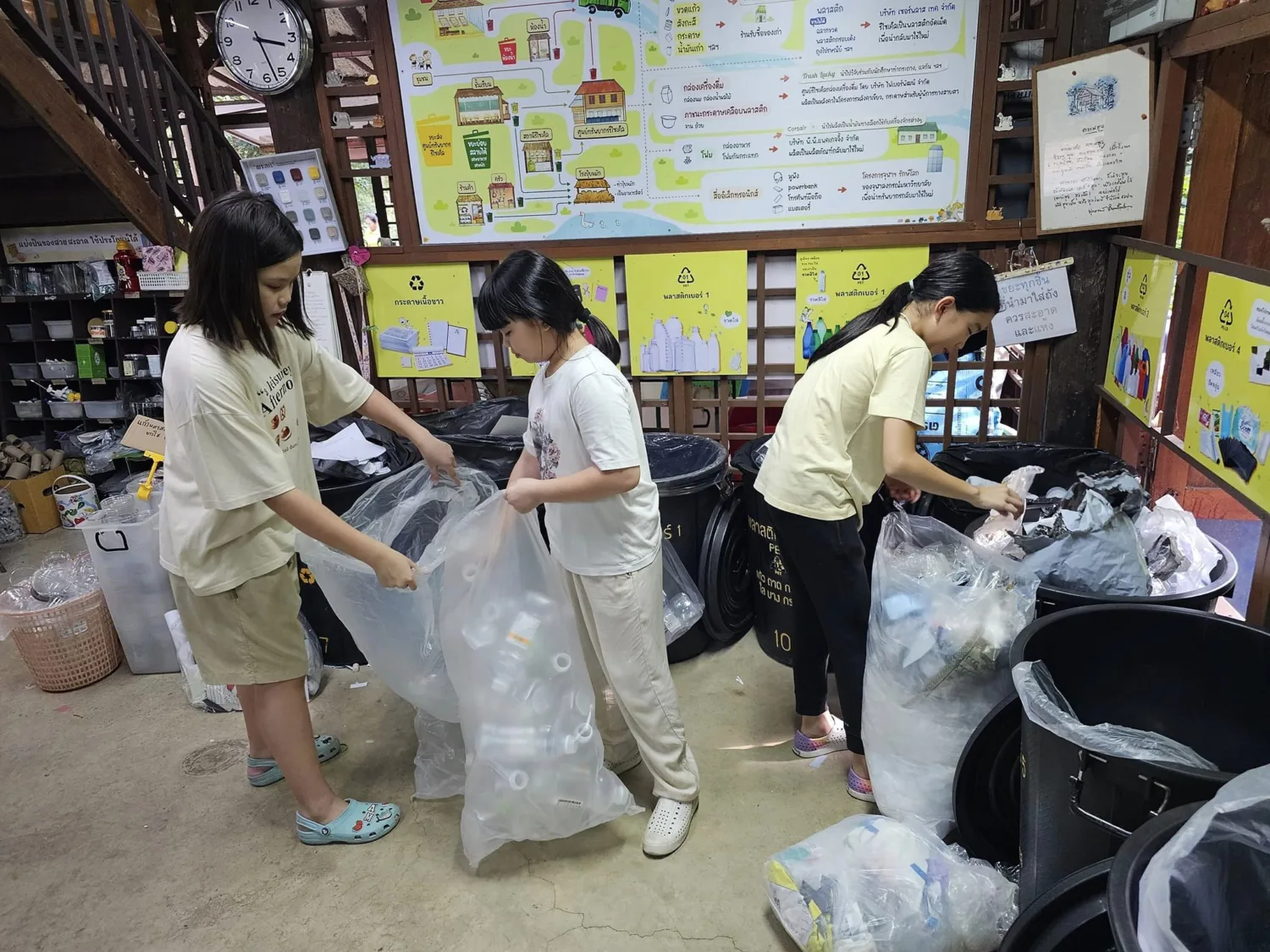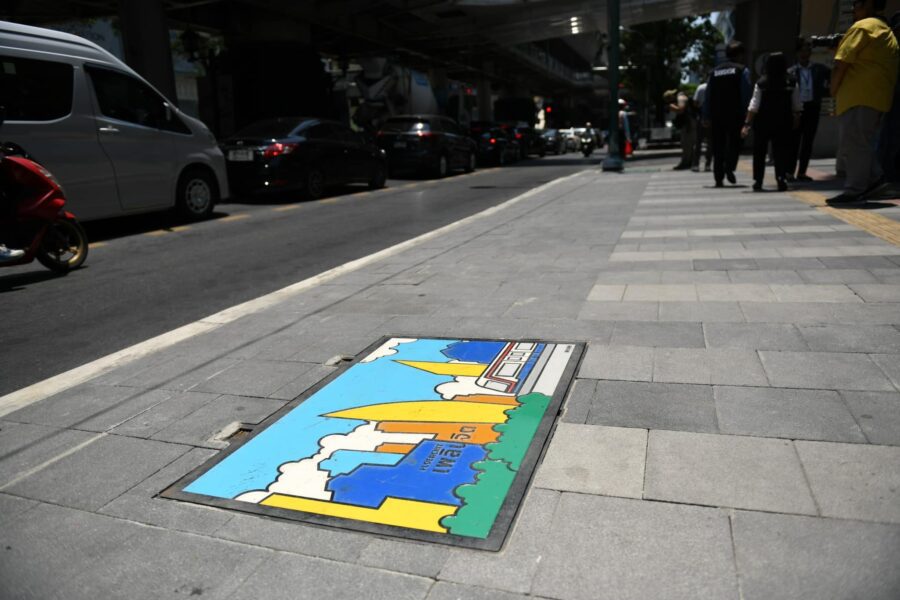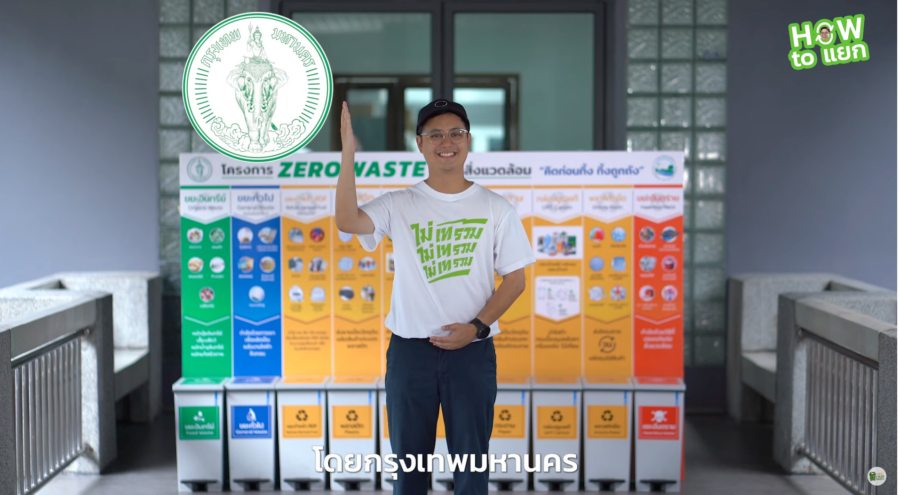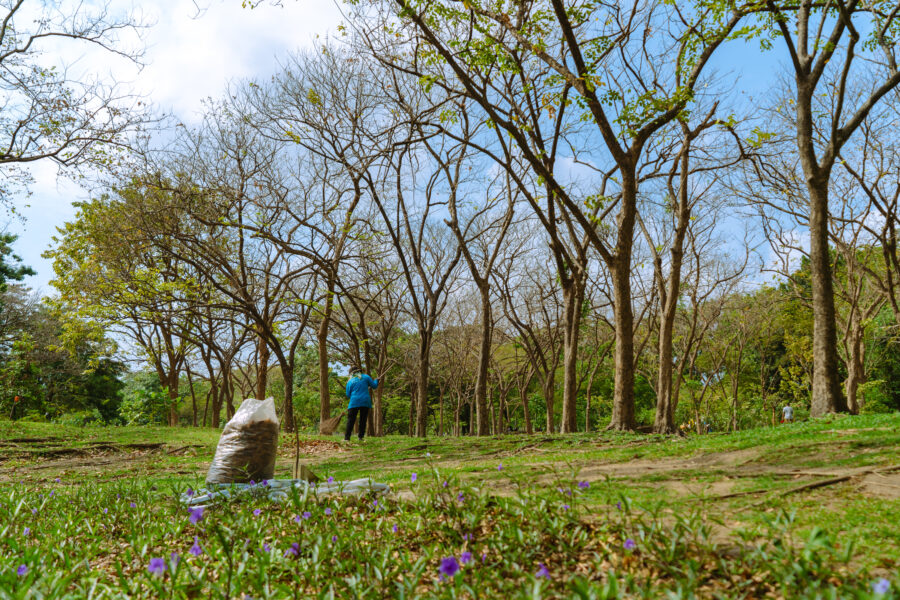By Natthanon Nakkhong
Many people may be accustomed to throwing trash around in no place, whether in parks, streets, workplaces, and especially schools. Even though there are trash cans provided, most students ignore the trash and do not throw it in the bin. They are also careless and like to hide trash around their surroundings, from marble tables, student desks, on the floor, drains, to trees with holes in them.
Rung Arun School in Bang Khun Thian district is a school without trash cans. There is only one trash disposal point, but they use teaching and serious trash management, to the point of washing plastic bags before separating them, and they make the children try doing it with their parents at home. Therefore, we would like to invite everyone to study the school's management system and teaching methods.
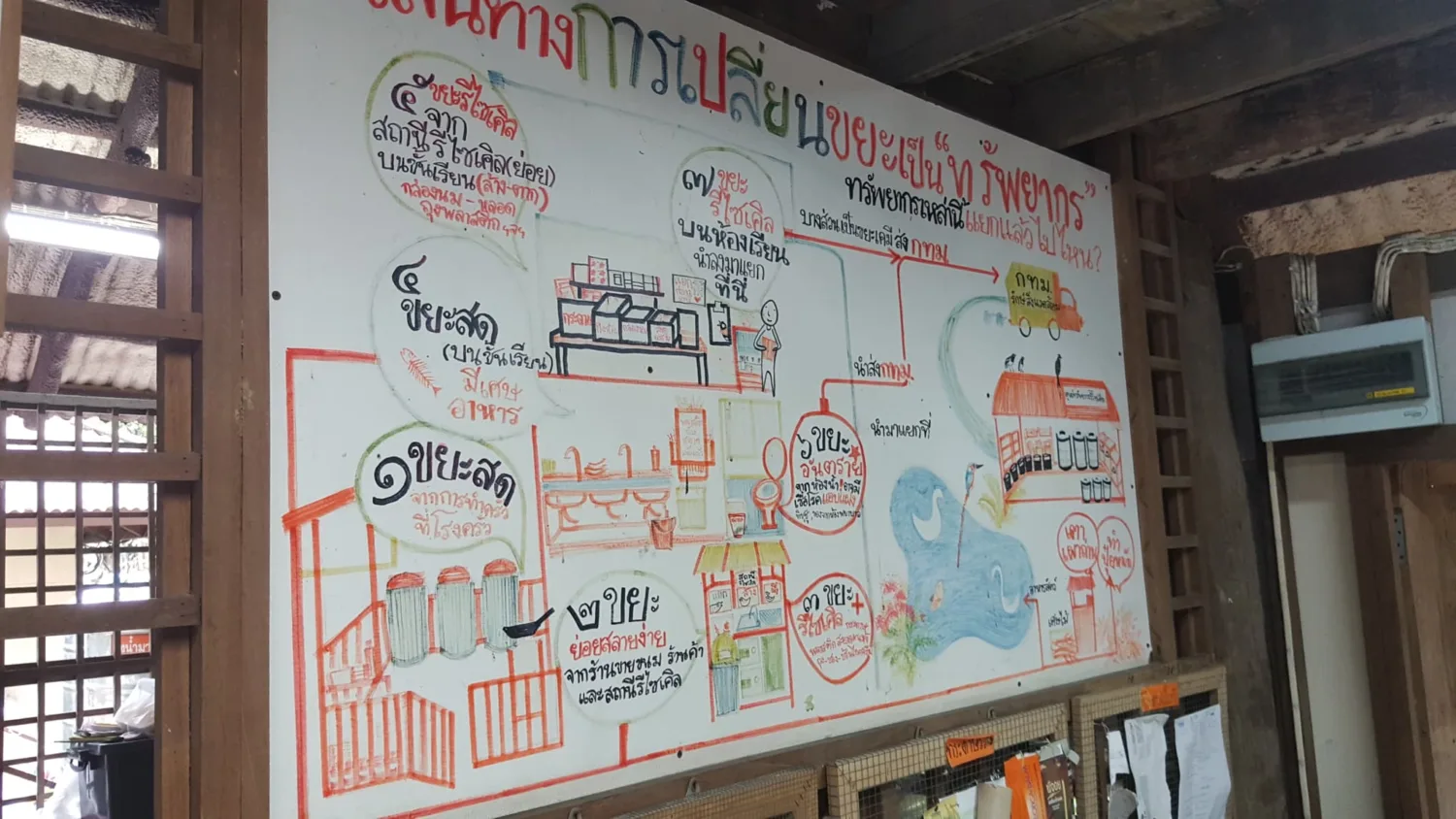
How do you teach Rung Arun students to separate waste?
First, let's get to know "Rung Arun School" better. Rung Arun is a school that emphasizes holistic education (Holistic Learning), integrating learning into life through learning processes in daily routines, training children to practice and learn to live with nature, understand the connection to themselves, society and the world. The school is located amidst green areas and nature. It offers education from kindergarten 1 to Mathayom 6.
Learning according to the Rungsun Way is a way of life of learning where teachers, students, and parents learn and grow together, making everyone a learner, an example in training themselves until they can rely on themselves and others.
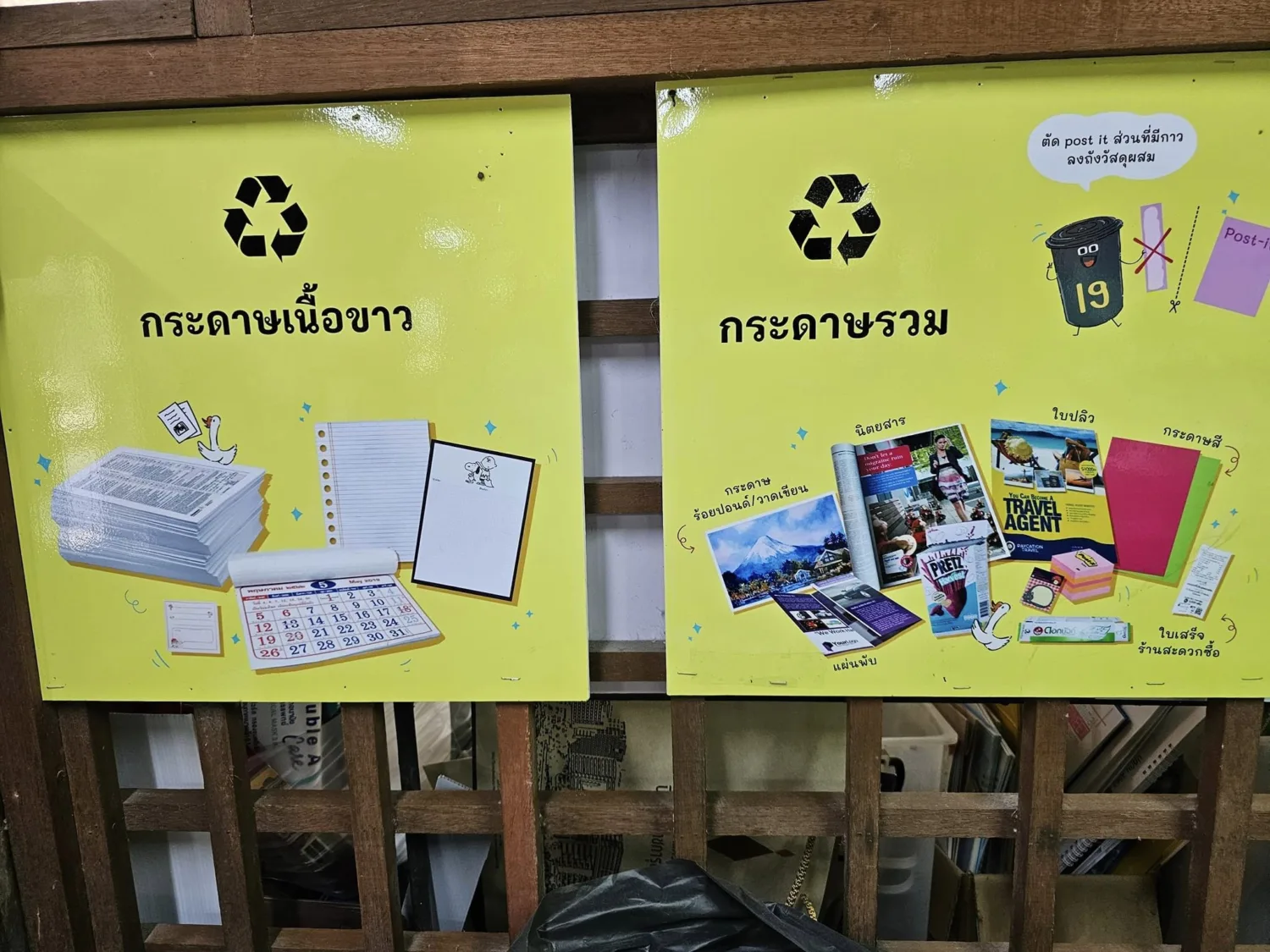
Because there is a garbage problem, we must find a solution.
We have to go back more than 10 years ago. Rung Arun had a problem with garbage overflowing into mountains and rotting garbage giving off a foul smell because everything was thrown together. Sometimes a pointed stick would poke a bag containing food scraps, causing water to overflow and rot, making a mess. This made the recycled garbage like milk cartons and food seasoning bottles rot as well. This became a source of rats, cockroaches, and germs, creating pollution and pollution for the school, and was the origin of the creation of Waste separation plant It started in earnest in 2004.
Starting with the Trash audit, Rung Arun had the housekeepers write labels indicating which bags came from which building and on which date. Then, they listed the types of trash and weighed each type of trash to keep statistics. From the statistics, they found that: The school uses up to 2,000 plastic bags per day and produces up to 200 kg of waste per day. Statistics are collected once a month, and are distributed to the school's central board for each building and floor. The data are then evaluated and problems are analyzed.
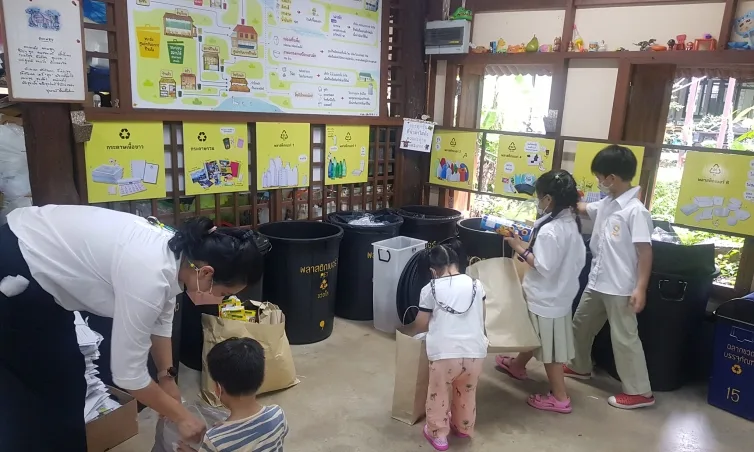
Waste separation in schools cannot be accomplished by just a handful of people.
Since the initial operation was done by volunteers, having representatives come to learn and apply it in their own buildings, it certainly could not be successful because in the end the problem lies in the lack of understanding at the source. Therefore, we must join together to solve it. The waste separation plant is not just a place for everyone to separate their waste, but also to learn about waste management and design their own solutions to create a good environment for the school at the same time.
But to get to where they are today, teachers have had to use tricks with students quite a bit. Even though it feels like forcing, it is done by giving students choices. For example, if a child has to throw away a bottle, there are two choices: one is to wash it and separate it, reuse it, or just throw it away, creating a mountain of trash. The teacher explains this to the students and lets them decide for themselves, because the heart of this work is to “let students do it.”
In addition to sorting waste, there are also activities that teachers organize for children to learn about the difficulties of working, analyzing and planning, such as the board organizing activity that separates staples, separates plastics, and unwraps Scotch tape, until the children complain to their teachers that they are cruel. But from the teacher's perspective, they want them to learn that these difficulties are the result of their own actions. Or if the students do not want to sit and unwrap the hassle again, next time they have to plan how to make it easier to separate by gradually teaching them. In the end, the children's separation work becomes equipment for their school activities.
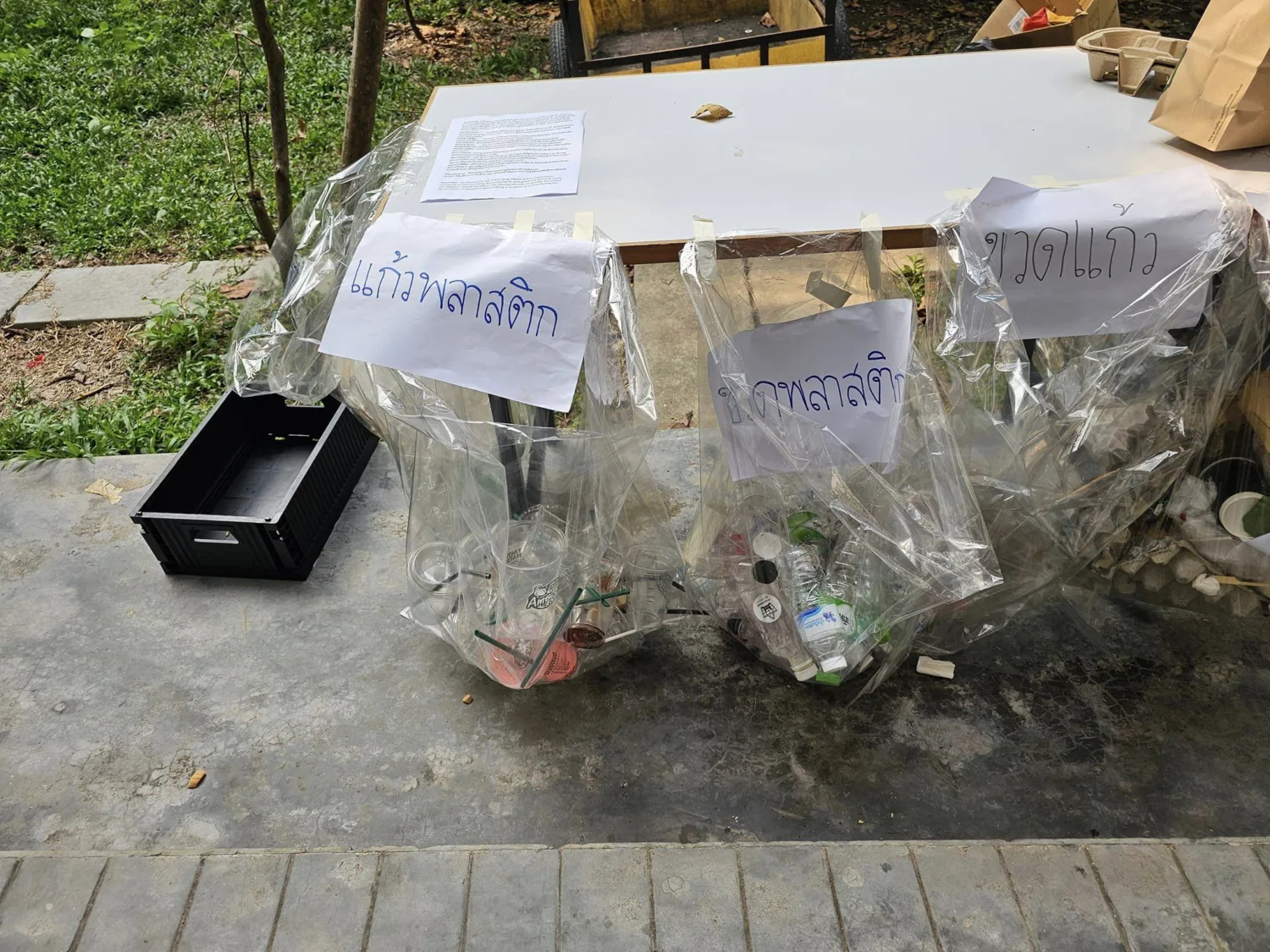
How detailed is Rung Arun's waste separation?
Waste separation plant or its nickname is a snail Recycling Resource Center Rung Arun's room is full of plastic bag drying racks, more than 27 sorting bins arranged around the room, and shelves are neat and tidy, like walking into a stationery store. There are more than 40 types of waste sorted. The waste is divided into 3 sections as follows:
The innermost part: It is a place to put paper boxes, calendars and electronic waste.
Central garden: It is the main part that places the bins for sorting paper, plastic, foam, metal, and glass in detail, including a place to separate small waste such as rubber bands, pens (separate the cores), etc.
Outside: It is a place to dry plastic after washing and there is a bin for separating food scraps to be taken to be made into fertilizer at the school's compost plant. Some are also distributed to people in the nearby community to feed animals.
As for useless waste from bathrooms and nurses' rooms, infectious waste is put in red bags, while general waste is put in black bags. All of this waste will be collected by officials for recycling and energy generation. As for the unusable waste, it will be properly managed by Bangkok, which will greatly reduce the amount of waste that needs to be buried.
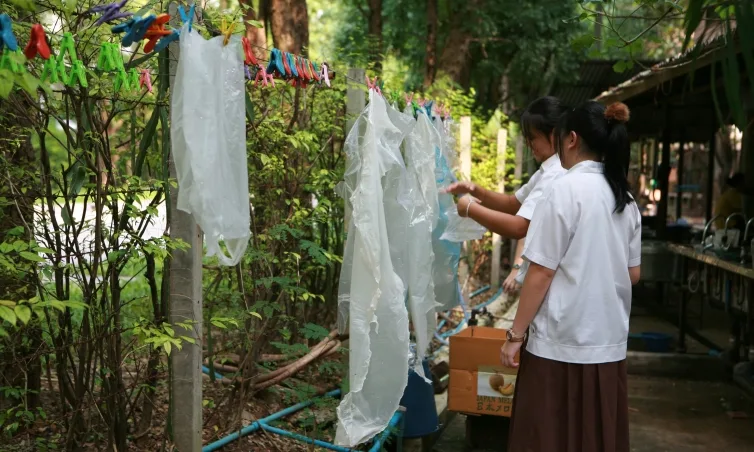
Sorting is good, but the benefits are greater than reducing waste.
In addition to Rung Arun effectively reducing the amount of garbage in the school, the garbage that students and their families have separated in the waste separation plant is like a small shopping center where garbage can be brought back to be used as teaching materials in the classroom or used to create handicrafts. Any children who want to use it can come and pick it up to use because every piece has been cleaned and separated correctly. Therefore, garbage is no longer worthless, but has become something useful again. Everyone just needs to separate it correctly.
“From over 200 kg of waste per day, Rung Arun School can manage to reduce it to no more than 30 kg per day.”
Lessons from the Dawn
- Effective waste management in schools is key to cooperation from the source of waste, or “students”. there Therefore, schools must be managed with students as the center, allowing them to learn and practice by themselves, so that children will have a positive feeling and separate waste without thinking it is their duty, but rather do it with love.
- Learning how to sort waste with fun gives children a good experience that can be passed on to their families, leading to sustainable waste management.
Suggestions from Rung Arun School teachers: Kru Mon, a teacher at the Recycling Resource Center, has a proposal for the government, which has a growing group of young people, so she wants them to pay attention to the environment because waste can generate profits, not by creating a society with zero percent returns, but as a business channel that can actually generate money.
Reference list
- Rung Arun School. (2009). Rung Arun ZERO WASTE. Retrieved from https://www.roong-aroon.ac.th/?page_id=6543
- Print Pimmarat. (2018). Go out and see the dawn of waste separation at Rung Arun School.. Retrieved from https://www.greenery.org/essay-rungarun/
- Roong Aroon Chanel. (26 September 2019). Zero Waste, Rung Arun School [Video file]. Retrieved from https://www.youtube.com/watch?v=dQmgti_zl3M
- TODAY – TODAY News Agency. (June 7, 2023). Raiding the 'separation plant' at Rung Arun School, separating more than 40 types of waste | TODAY [Video file]. Retrieved from https://www.youtube.com/watch?v=i3pJ083ID5s






